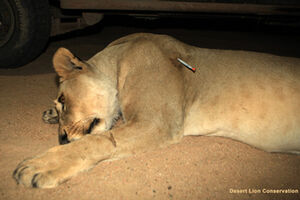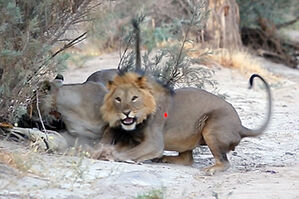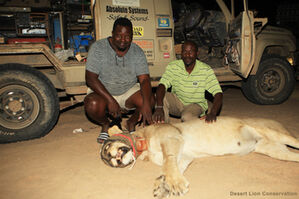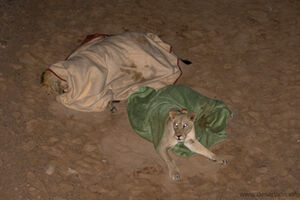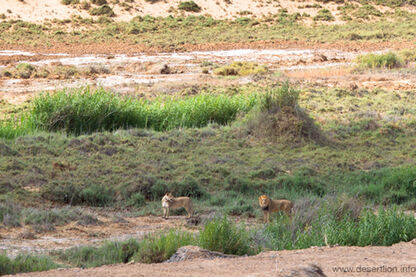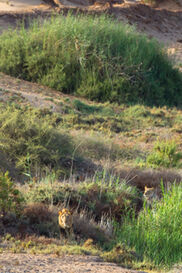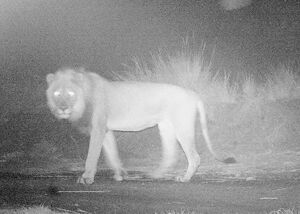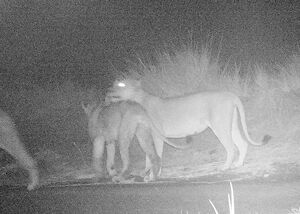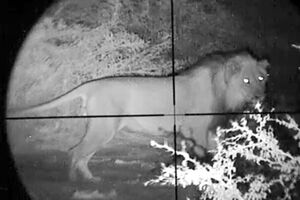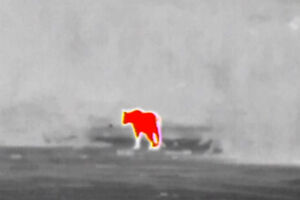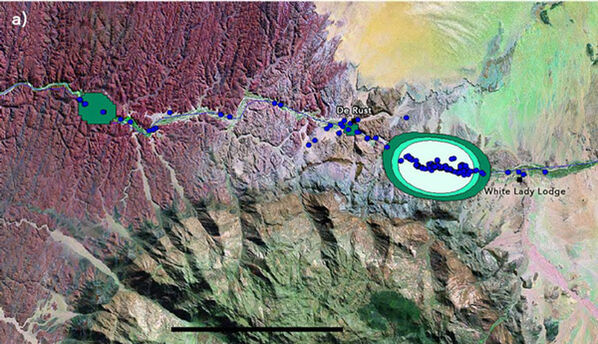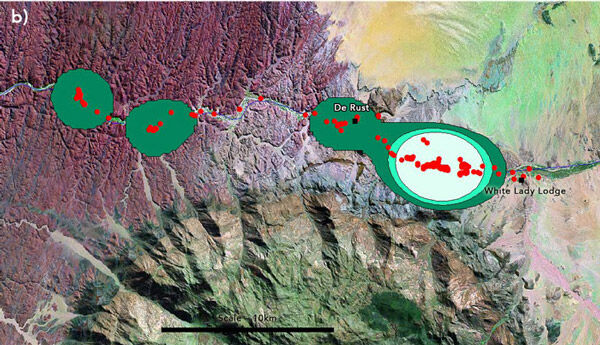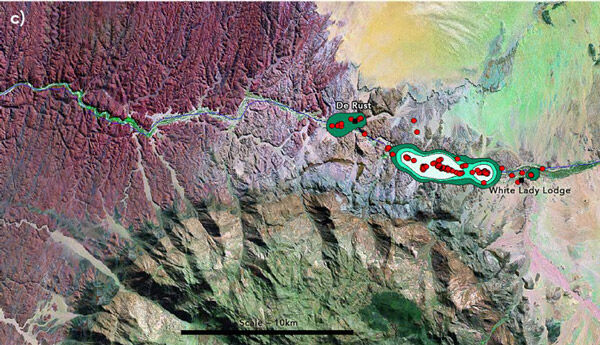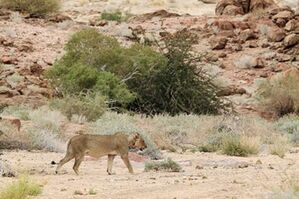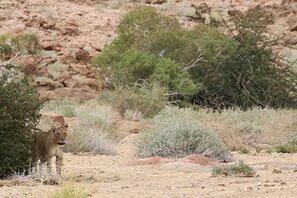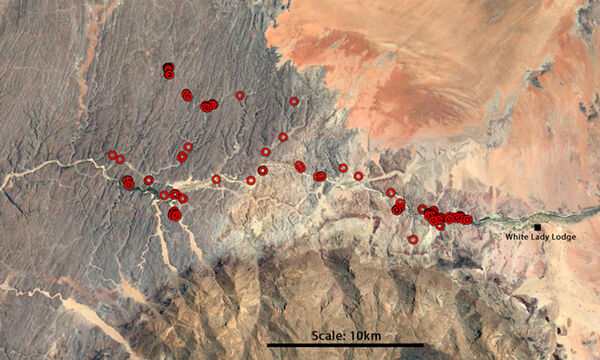Ugab River
Brandberg
On 14 Jan 2018 two adult lions approached the White Lady Lodge at Brandberg along the Ugab River and killed 172 sheep inside a make-shift corral. The Ministry of Environment & Tourism requested the Desert Lion Conservation Project to assist with the problem. We invested a total of 27 consecutive days assessing the conflict situation and helping to find an amicable solution to a difficult problem.
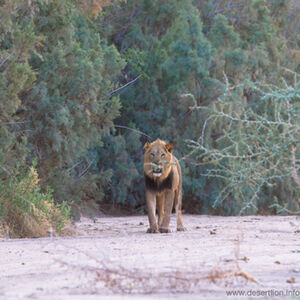
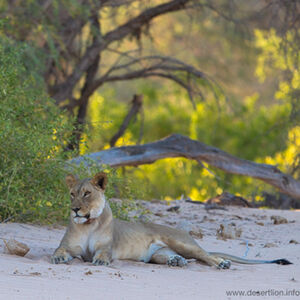
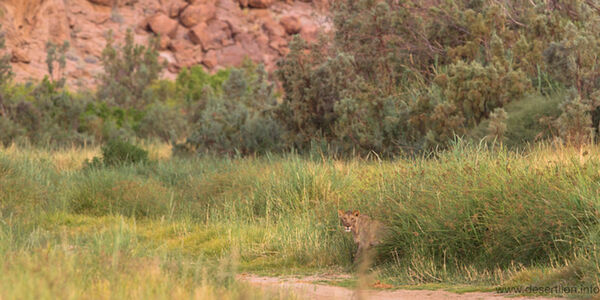
The two lions, an adult male and adult female originally from the Huab Pride, were immobilised and fitted with satellite collars. In an effort to understand the nature of the human-lion conflict problem, data were collected on the movements of the lions, the presence and distribution of local communities and livestock, and the availability / abundance of wild prey animals.
After careful consideration and with approval from the Ministry of Environment & Tourism both lions were translocated to the mouth of the Huab River on 23 Jan2018 (see map 1). On 25 Jan 2018, after recovering from the anaesthetics, the lions started moving back to the conflict area. This confirmed that the lions had identified the area around White Lady Lodge as a "hotspot", according to the criteria listed in the NW Human-lion Conflict Management Plan. The male arrived back at the marsh west of White Lady Lodge five days later on 30 Jan 2018. The lioness followed a different route and arrived six days later on 31 Jan 2018.
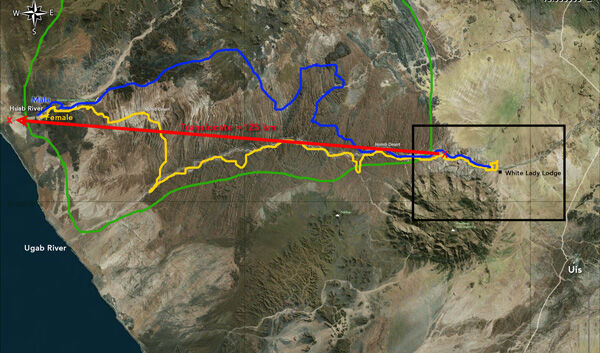
Map 1. The translocation of two lions (adult male & adult female) from White Lady Lodge in the Ugab River to the mouth of the Huab River (red line) on 23 Jan 2018. Followed by the subsequent movements for the male (blue line) and the female (yellow line) as they returned to the conflict area. The green line indicates their normal home range to the northwest of the Brandberg.
During the translocation of the male & female lion, three additional lions arrived at the conflict area. They were identified as an adult lioness and her two large male cubs (aged 18-20 months). The three lions exhibited similar behaviour by resting in the marsh during the day and approaching the Lodge area at night. The lioness was immobilised at fitted with a satellite collar on 1 Feb 2018.
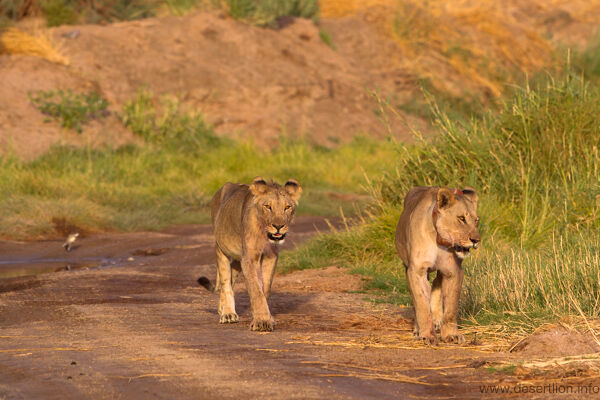
We then focussed on determining the cause of the attraction for the lions and why the "hot-spot" developed. This was necessary in order to find a suitable solution to the problem, because the sheep-pen was clearly not the attraction. The second lioness and the two young males were not present during the killing of the 172 sheep, yet they repeatedly approached the Lodge area at night. Furthermore, the two culprits did not return to the sheep corral, as would be expected. Whilst the mass-killing of the sheep certainly had an influence on their behaviour, it did not appear to be responsible for their attraction to the area. Using specialised night-vision equipment, more than 130 hours were spent following and observing the behaviour of the lions. All five lions were clearly attracted to the area around the lodge and repeatedly visited the area at night.
An analysis of the movement patterns of the thee collared lions illustrate their preference for the area between the swamp and the Lodge (Map 2a-c). During this period all three lions moved over an extremely small area, especially when compared to all other desert-adapted lions, such as their natal Huab Pride that lived in a home range area of 4,685 km2. The areas they utilised, based on the Minimum Convex Polygon method, were as follows: Male = 53.3 km2, Female 1 = 59.3 km2 and Female 2 = 33.2 km2.
Map 2a-c. Kernel Contour analysis (95, 85 & 75%) indicating the areas of concentration used by three lions in the Ugab River between 18 Jan and 8 Feb 2018.
Cliff Tjikumbi, the Rapid Response Team leader, and two game guards from the Tsiseb Conservancy, conducted a comprehensive survey amongst the local farmers to determine the number of livestock killed by the lions. During the six months prior to the 172 sheep event, there were six incidents of conflict at three settlements where a total of six cattle and seven donkeys were killed by lions. These sporadic human-lion conflict incidents over a 6-month period and in a relatively large area is insufficient to explain the behaviour of the lions. Despite our efforts and all the data presented above, we have not found the reason why the lions are attracted to the area and why the "hot-spot" developed.
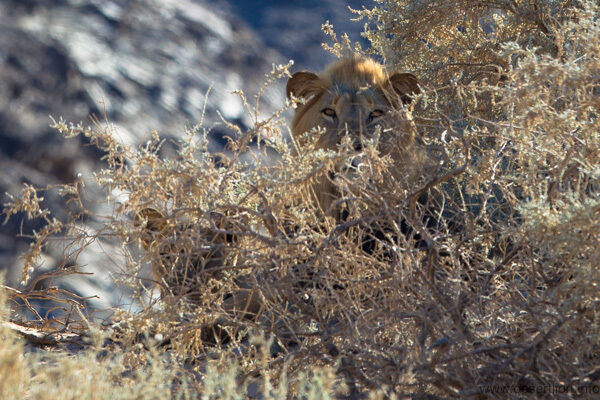
Under guidance of the Ministry of Environment & Tourism and in collaboration with several conservation NGOs, a considerable effort is currently underway to find a solution to this unusual human-lion conflict problem.
Monitoring of Ugab lions
During the month of Mar 2018, the Ugab lions, who were involved in the human-lion conflict incident at White Lady Lodge during Jan 2018, have remained in the upper section of the Ugab River opposite the Brandberg (see map below).

